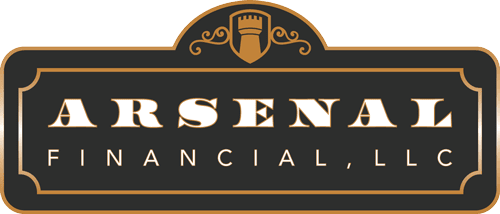Prior to the pandemic, U.S. companies were borrowing money at record rates. Just when interest rates were finally on the rise, the pandemic hit and borrowing sped up. As interest rates dropped, companies both large and small kept taking on more and more debt. A lot of that was to stay afloat when shutdown orders and restrictions were put in place. From a personal level, the stimulus aided families when the world came to a screeching halt.
That money has been a lifesaver for many families and small businesses across the country, helping them weather the pandemic and come out on the other side. Even thriving businesses could take advantage of a bottomed out interest rate, refinancing and taking on new debt with much better terms.
Have the government, small business owners and tax payers just delayed a national reckoning? We may be in a so-called borrowers market, but it’s more complex than that. Just because interest rates are low does not mean you should be maxing out your credit limits – despite the fact that the government is doing just that, and leading by example.
Here’s why it matters.


How Do We Pay For All Of This?
Interest rates on corporate debt have been slowly declining since the 1980s. Low inflation and general slow economic growth are just two of the many factors that account for this decline.
At the start of 2020, the average investment-grade corporate bond yielded 2.84%. By the end of the year, it had dropped to 1.74%, a new all-time low (Source: FA-Mag).
As a result, companies rushed to refinance debt and lock in these rates. Low rates, investors willingness to invest in riskier companies and government aid have helped more unproductive firms stay alive, when the normal course of business would have sent them under. But it’s also helped some smaller businesses weather the pandemic storm.
How do we pay for something like this?
The government, in parallel to personal finances when we have cash flow challenges, have options: increase income, reduce expenses or both.
- Refinancing. Governments can extend debt obligations and take more favorable terms on their debts.
- Raising taxes. Tax changes are already being proposed in the new administration and may be implemented for tax year 2022. Some of these include tax proposals to increase the corporate tax rate, increase capital gains tax rates, and raise the top tax bracket.
- Cutting services and programs.
- Generate revenue otherwise.


The Unintended Consequences of Increased Lending
The idea of a borrower’s market can be a trap. Easy money makes it more enticing to borrow growing amounts of money, but ultra low interest rates make it difficult for fixed income investors, like retirees.
Remember the mortgage rates in the early 80s? It may seem like decades ago, but it provides a lot of context for this decade. In the 80s, the FDIC-insured bank products yielded over 10% interest. To put that in context, 30-year mortgages are now under 3% and savings accounts have a negative real yield when you account for inflation. You read that right. Bank savings accounts are actually losing money when you account for the impact of inflation — a loss of purchasing power over time.
There are several unintended consequences to the sweeping changes in 2021, particularly for companies:
- Labor shortage: We are seeing a labor shortage for low-wage workers. Many low wage jobs in the U.S. don’t pay enough for workers to live comfortably, and don’t offer enough benefits to entice workers to return, so instead, workers are opting to remain on unemployment — even if this approach is short-sighted.
- Skilled workers: Skilled workers have all the power in the labor market, and it’s come at a crucial time. As companies decide on their own future of work arrangements, skilled workers feel more and more confident to simply leave their positions and jump ship. They call their own shots – and they’re driving up prices for mid-level and executive compensation, raising expenses and reducing profitability for firms.
Should We Be Borrowing More Money?
Are Americans following the lead of our nation’s practices?
First things first, not all debt is bad debt. “Leverage” allows us just that: the ability to fund life and use Other People’s Money (OPM) with an IOU for buying a business, house, car and education.
Here are some of the key things to think about when you’re thinking about borrowing and your personal finances:
- Debt Ratio: How much should you be dedicating to debt service? 10%? 25%? 50% of your income? It all depends, and you should examine this on a case-by-case basis.
- Don’t Let Debt Own You: Having debt is not a bad thing. But don’t let the American debt cycle drive your decision-making. Don’t pay too much attention to how everyone else is managing their finances. That’s not likely to be how you should structure your financial lives.
- Consider Repayment Terms: Many business loans are simple, flat loans with a fixed interest rate – but not all the loans. Many loans come with complicated repayment terms. If you do plan on borrowing, take these into account and read the fine print.
- Build a Plan: If you do plan to take on debt, build a clear and concise plan for debt repayment. Consider each individual debt obligation in the context of a broader financial plan.
Borrowing money has plenty of pros and cons, but it’s most important to block out all the external noise and focus on your own financial needs instead.
What are Fixed Income Investors to do?
The retirees on fixed incomes are the OP (other people) that are hoping for some interest on their lending to those borrowers in need of their resources.
As mentioned, with ultra-low interest rates, investors aren’t able to make much interest in banks and must take a degree of risk with precious assets to try and keep up with the ‘cost of stuff’ – AKA purchasing power.
Fixed-income investors and savers alike may be able to find a better rate of return with a blend of different strategies across different risk profiles. Lower-risk investments, with downside protection, allow for people on a fixed-income or nearing retirement to diversify their assets and create an opportunity for more equity-like returns. The low interest rates that lessen yields for the fixed-income investment market may positively impact alternative investments because the mechanisms that reduce returns can also boost economic growth.
Investing in a blend of fixed-income investment products can help improve total return and attempt to reduce risk in a low interest rate environment. Here are a few examples:
- Savings accounts and Certificates of Deposit.
- Fixed and Indexed-Annuities.
- Treasury Bonds.
- Municipal Bonds.
- Corporate Bonds.
- High Yield Bonds.
If you’re nearing retirement or if you’re already retired, you may elect to revisit your fixed-income investment strategy in light of the low interest rate environment. It’s important to keep in mind the “why” behind adding bonds and other lower risk investments: to preserve capital AND to diversify. Bonds, CDs and fixed annuities often play the role of minimizing volatility of a portfolio, and are one aspect of a larger investment strategy. Overall, when interest rates are low, it’s a good idea for fixed-income investors to remain open-minded when it comes to alternative approaches.
Disclaimer: Content in this material is for general information only and not intended to provide specific advice or recommendations for any individual. All performance referenced is historical and is no guarantee of future results. All indices are unmanaged and may not be invested into directly.
LPL Financial does not provide tax advice. Clients should consulate with their personal tax advisors regarding the tax consequences of investing.
High yield/junk bonds (grade BB or below) are not investment grade securities, and are subject to higher interest rate, credit and liquidity risks than those graded BBB and above. They generally should be part of a diversified portfolio for sophisticated investors.
Fixed annuities are long-term investment vehicles designed for retirement purposes. Gains from tax-deferred investments are taxable as ordinary income upon withdrawal. Guarantees are based on the claims paying ability of the issuing company. Withdrawals made prior to age 59 ½ are subject to a 10% IRS penalty tax and surrender charges may apply.
Fixed Index Annuities (FIA) are not suitable for all investors. FIAs permit investors to participate in only a stated percentage of an increase in an index (participation rate) and may impose a maximum annual account value percentage increase. FIAs typically do not allow for participation in dividends accumulated on the securities represented byh the index. Annuities are long-term, tax-deferred investment vehicles designed for retirement purposes. Withdrawals prior to 59 ½ may result in an IRS penalty, and surrender charges may apply. Guarantees are based on the claims-paying ability of the issuing insurance company.
Bonds are subject to market and interest rate risk if sold prior to maturity. Bond values will decline as interest rates rise and bonds are subject to availability and change in price.
The market value of corporate bonds will fluctuate, and if the bond is sold prior to maturity, the investor’s yield may differ from the advertised yield.
Municipal bonds are subject to availability and change in price. They are subject to market and interest rate risk if sold prior to maturity. Bond values will decline as interest rates rise. Interest income may be subject to the alternative minimum tax. Municipal bonds are federally tax-free but other state and local taxes may apply. If sold prior to maturity, capital gains tax could apply.
Government bonds and Treasury bills are guaranteed by the US government as to the timely payment of principal and interest and, if held to maturity, offer a fixed rate of return and fixed principle value.

